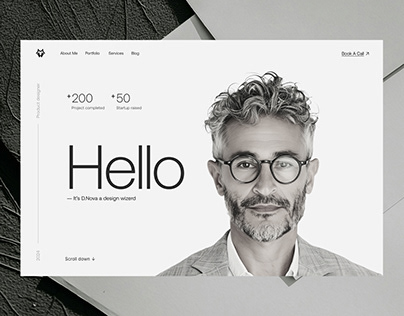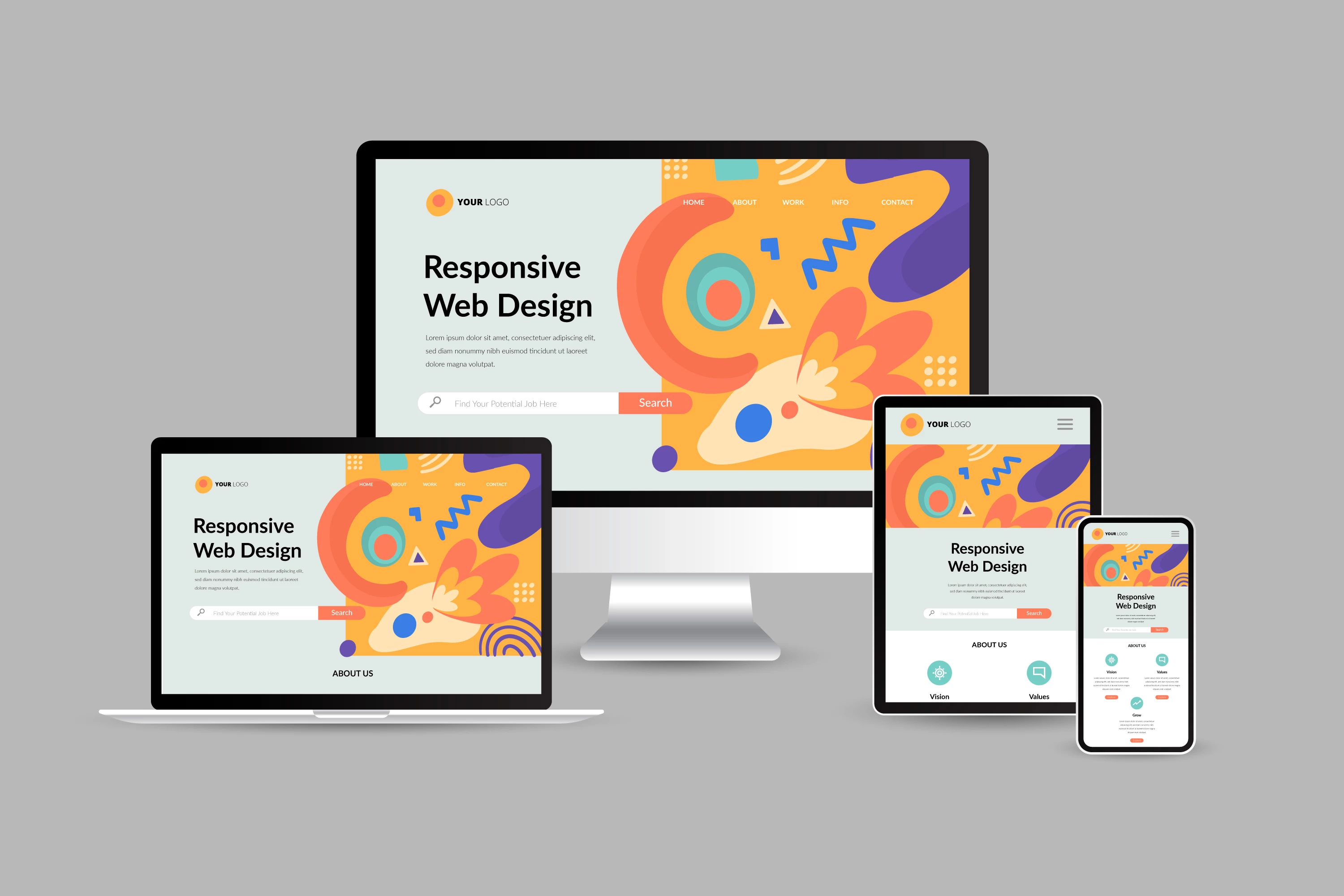Top Trends in Website Design for 2024: What You Need to Know
Top Trends in Website Design for 2024: What You Need to Know
Blog Article
Modern Site Layout That Catches Focus and Transforms
In an increasingly electronic landscape, modern site style has actually emerged as an essential element in catching individual attention and driving conversions. As we check out these vital components, it becomes clear that understanding their interaction can considerably impact a website's efficiency and individual satisfaction.
Importance of Visual Power Structure
Aesthetic pecking order is a vital aspect in internet site design, as it guides users' focus and enhances their general experience. By strategically organizing content, designers can route customers to one of the most vital details initially, thus increasing interaction and enhancing functionality. Efficient aesthetic pecking order uses various methods, consisting of dimension, comparison, shade, and spacing. Bigger elements naturally draw the eye, while contrasting colors can emphasize essential messages, making them stick out among more restrained elements.
Incorporating a logical flow in material plan is essential; for circumstances, positioning the most critical information at the top of a page cultivates immediate recognition. Furthermore, regular use typography, such as varying font sizes and designs, aids establish a clear content framework. This organization not just help in navigating however additionally develops trust fund, as customers really feel much more comfy when they can quickly find what they are searching for.
Eventually, a well-executed aesthetic pecking order not only boosts aesthetic allure but additionally dramatically affects customer habits. By prioritizing important aspects and making certain a smooth experience, developers can effectively transform visitors into customers, reinforcing the relevance of this foundational design concept in modern internet site growth.
Responsive Layout for All Tools
Creating a smooth experience across various gadgets is vital in today's electronic landscape, where individuals accessibility internet sites from tablets, smart devices, and desktop computers alike. Receptive design is a crucial strategy that makes sure sites adjust fluidly to different screen sizes, alignments, and resolutions. By employing flexible grids, pictures, and CSS media inquiries, designers can create designs that preserve aesthetic honesty and functionality, no matter the device being made use of.
The relevance of responsive style prolongs past aesthetics; it directly influences user interaction and conversion rates. An internet site that operates well on all tools motivates longer check outs and decreases bounce prices, as individuals are more probable to interact with material that is easy to browse. Search engines, especially Google, prioritize mobile-friendly sites in their rankings, making receptive layout an important element of search engine optimization (SEO)
Integrating receptive style not just enhances customer experience yet additionally simplifies the growth process. By developing a solitary site that functions across gadgets, businesses can conserve time and resources compared to developing separate mobile and desktop versions. Inevitably, receptive design is a basic method for modern site design, guaranteeing ease of access and contentment for all customers, despite their device.
Involving Interactive Elements
While a receptive style lays the foundation for a functional site, integrating appealing interactive components is vital for capturing individual interest and cultivating much deeper links. Website Design. Interactive aspects, such as computer animations, quizzes, and clickable infographics, produce a more dynamic user experience, urging visitors to spend more time on the site
Incorporating interactive features can also direct customers via complex details, making it less complicated to digest content. Interactive sliders can highlight product variants, while embedded video clips can give demos or testimonials that reverberate even more than fixed photos or message. Gamification techniques, like rewards for involving or completing jobs with web content, can improve individual motivation and retention.
Effective use of interactive aspects not only enhances the customer experience however can also cause greater conversion rates. By making interactions pleasurable and helpful, companies can cultivate a sense of loyalty and depend on with their target market. Nevertheless, it is crucial to balance interactivity with performance; extremely complex functions may impede site speed, negatively impacting user fulfillment. Ultimately, incorporating well-designed interactive components can considerably raise an internet site's efficacy, driving interaction and conversions in today's affordable digital landscape.
Streamlined Navigation Practices
Reliable navigating is a keystone of any type of successful website, as it directly affects individual experience and web content ease of access. Structured navigating practices make certain that users can quickly situate details, boosting their interaction with the site. A well-structured navigation menu must be instinctive and basic, commonly featuring a restricted number of primary classifications to stay clear of overwhelming visitors.
To attain streamlined navigating, designers ought to prioritize a hierarchical framework that rationally organizes web content. Applying breadcrumb tracks can provide users these details with context about their current location within the site, permitting smooth backtracking. Additionally, using drop-down menus can properly preserve room while still supplying access to subcategories.
Receptive design is crucial, as navigation needs to be practical across all tools (Website Design). Mobile users, particularly, gain from touch-friendly food selections and collapsible sections that preserve usability without jeopardizing aesthetics

Effective Call-to-Action Strategies
A well-crafted call-to-action (CTA) is vital for directing customers toward desired end results on a site, as it urges them to involve with content or purchase. To optimize their efficiency, CTAs should be clear, compelling, and tactically visit our website positioned throughout the website.
First, use action-oriented language that interacts necessity or value, such as "Begin," "Sign up with Now," or "Case Your Discount rate." This language not just encourages users however also sets clear expectations regarding the following steps.
Second, consider style components; CTAs should stick out aesthetically via contrasting colors, ample whitespace, and prominent positioning. A button that is easy to see and click increases the possibility of customer interaction.
In addition, personalizing CTAs based upon customer actions or demographics can dramatically improve involvement. Customized messages reverberate more with individuals, driving higher conversion rates.

Final Thought
Finally, modern-day web site design stresses the integration of visual pecking order, responsive formats, engaging interactive components, structured navigating, and reliable call-to-action techniques. These components collectively boost individual experience, ensuring that visitors stay involved and encouraged to check out content further. By focusing on these design principles, services can considerably boost customer retention and conversion prices, eventually bring about better success in the digital landscape. The continual development of web design emphasizes its important role in efficient on-line interaction and marketing.
In an increasingly digital landscape, modern-day site design has actually emerged as a pivotal element in catching individual focus and driving conversions.Visual power structure is a vital aspect in site design, as it guides users' attention and enhances their overall experience.The relevance of receptive style extends beyond visual appeals; it straight impacts customer interaction and conversion prices.Incorporating receptive layout not only boosts customer experience yet also improves the development procedure. Eventually, responsive style is a basic approach for contemporary website style, making sure accessibility and fulfillment for all users, regardless of their gadget.
Report this page